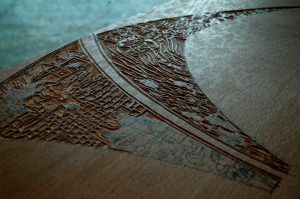 Just as there are many roads leading to Rome, there are many ways to do wood block printing as well and I like to explore the possibilities.
Just as there are many roads leading to Rome, there are many ways to do wood block printing as well and I like to explore the possibilities.
Western style mono block is normally black and white but you can introduce more blocks and colours, so in fact it can be any combination you can think of.
One print was made with a block of beech plank as it was done during the middle ages. I have used a few priceless pieces of heart Kauri, Agathis australis, recovered from New Zealand swamps and carbon dated at 50,000 years old. It has a beautiful, fine, even texture and yet is hard enough to withstand some vigorous printing.
When cutting blocks for the Japanese traditional style printing, Moku Hanga, I used nice blocks of cherry, but not the prized mountain cherry as I simply couldn’t lay my hands on that. Australian Hoop pine plywood made good blocks and sometimes, if accuracy wasn’t so important, cheap poplar timber ply did the job nicely. Woodworm-riddled pieces of wood also made for some interesting effects. In short you can go anywhere where your imagination takes you.
In the photos you can see examples of blocks for the simple mono colour prints as well as a sequence of blocks and the gradual build up of an image as each subsequent block is printed.
When printing Moku Hanga style the only ingredients used are water, a paste made of rice flour (nori) and dry pigment which is made into a paste by adding a bit of ethanol. For the black colour, Sumi is used, an intense, black, sour-smelling paste made of burned fish.
The paper used can only be Kozo or Gampi. The Kozo is made with long fibres of the bark of the mulberry tree whereas the Gampi can be made from other shrubs. The Kozo can be unbleached as a buff coloured paper, or bleached, called Hosho.
All important is the registration when doing multicolour prints. The actual printing is done by hand using a baren. Registration is making sure that subsequent blocks are lined up correctly. The paper is prepared the night before printing by wetting it and it is kept moist throughout the printing process. Moku Hanga printing is simply not possible using western cotton rag papers.
This is really an extremely brief description of the method, but if you want to find more about it follow these links (working on these and will have them there in the next couple of days)


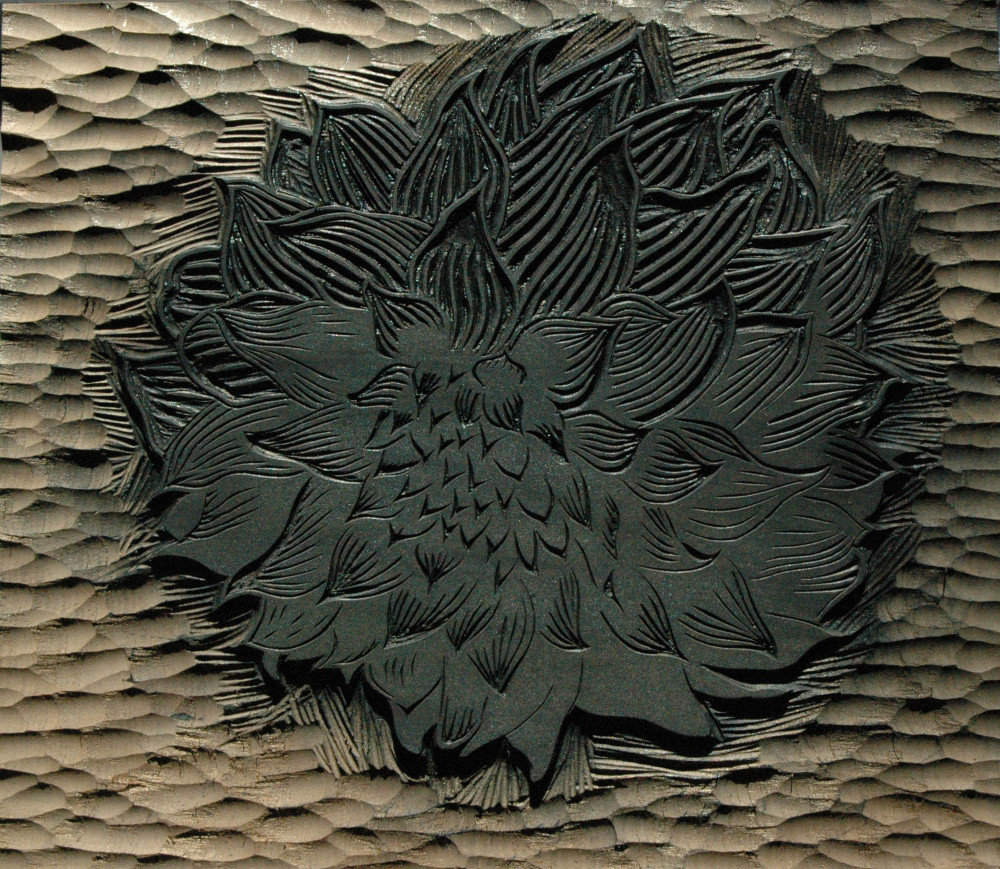
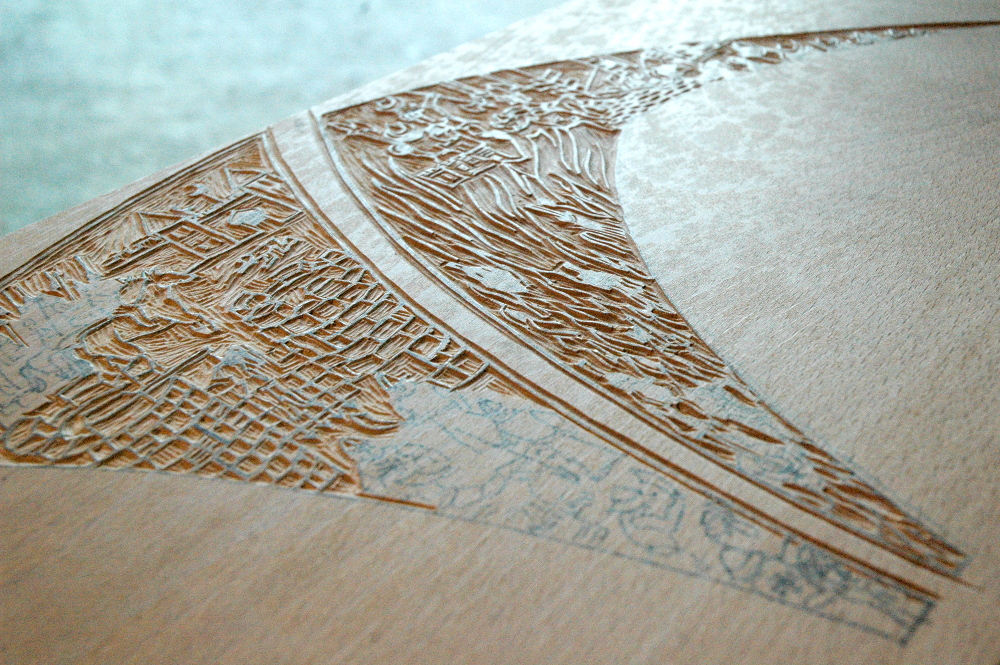
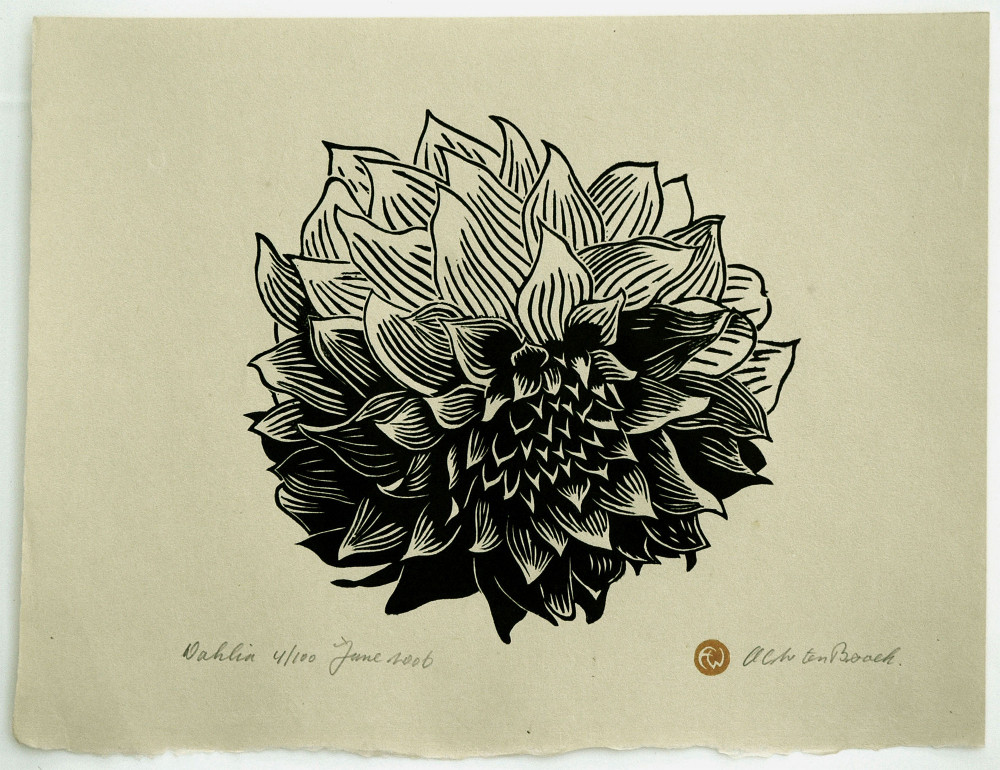
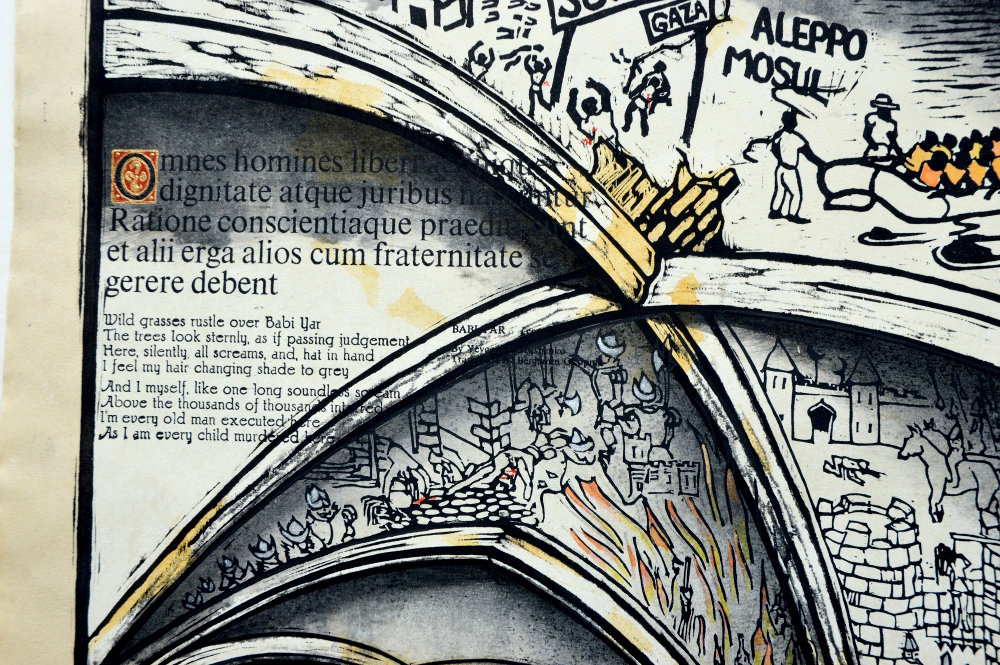
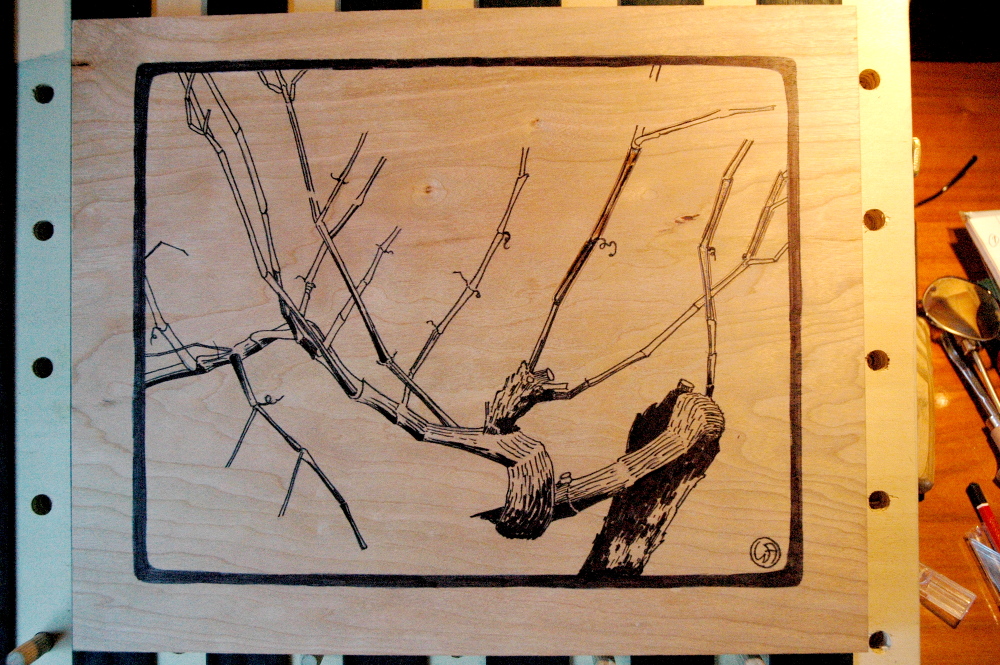
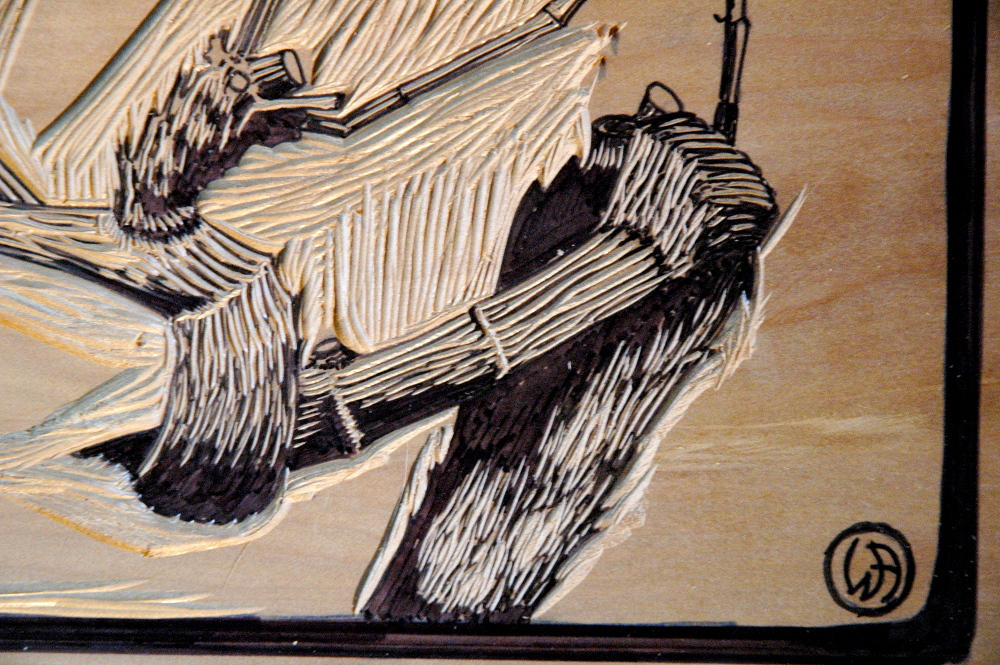
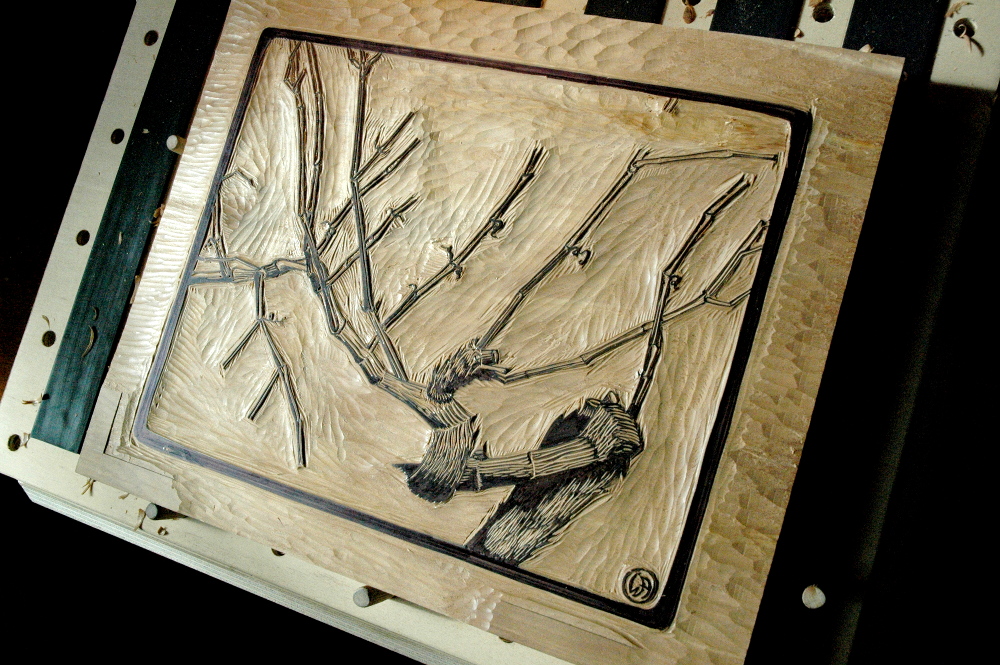
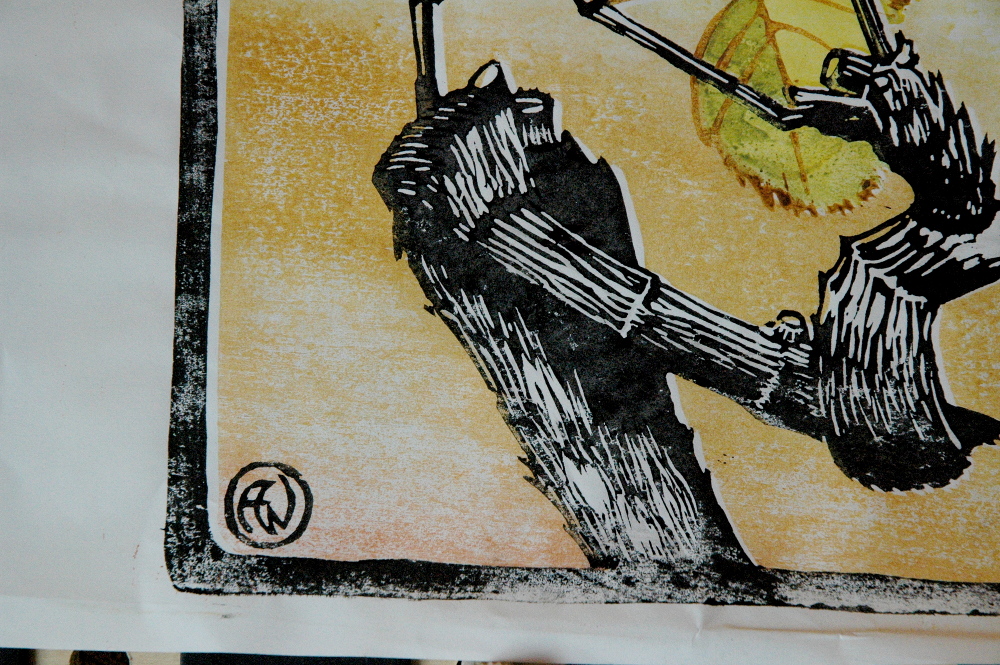
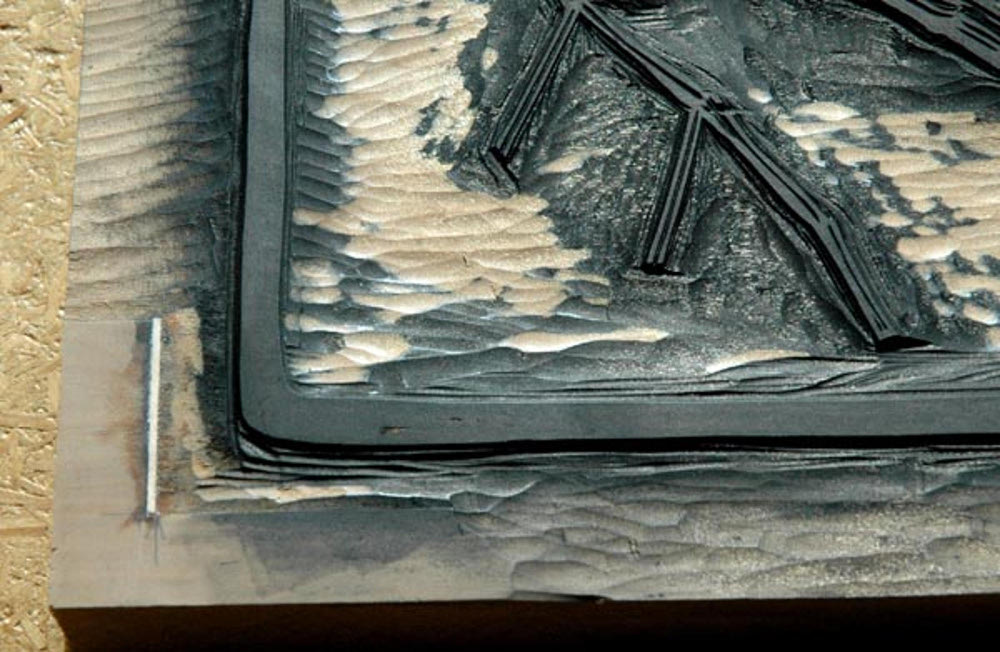

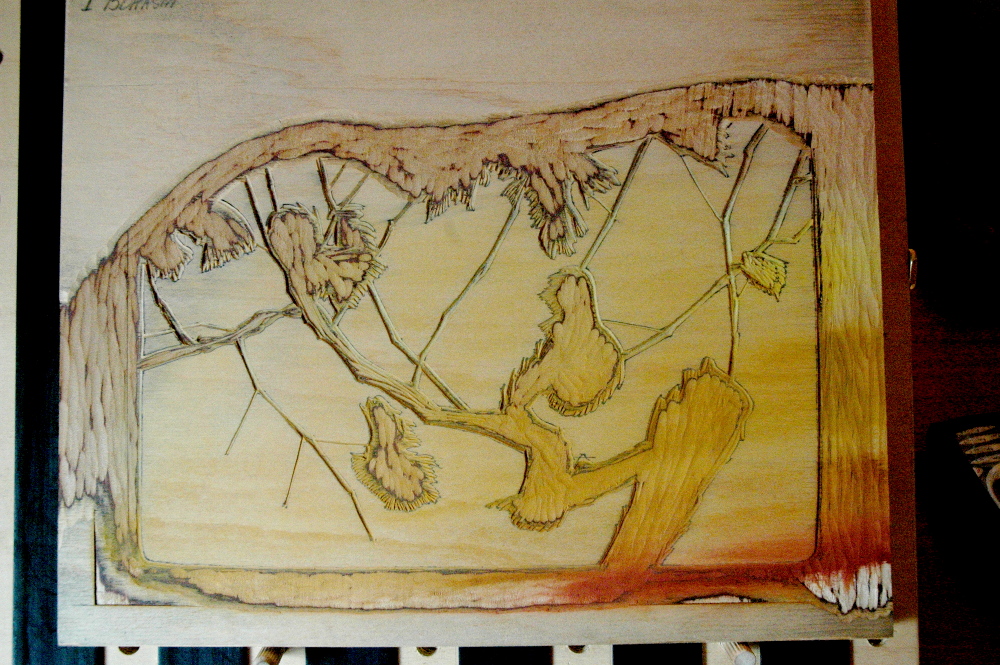
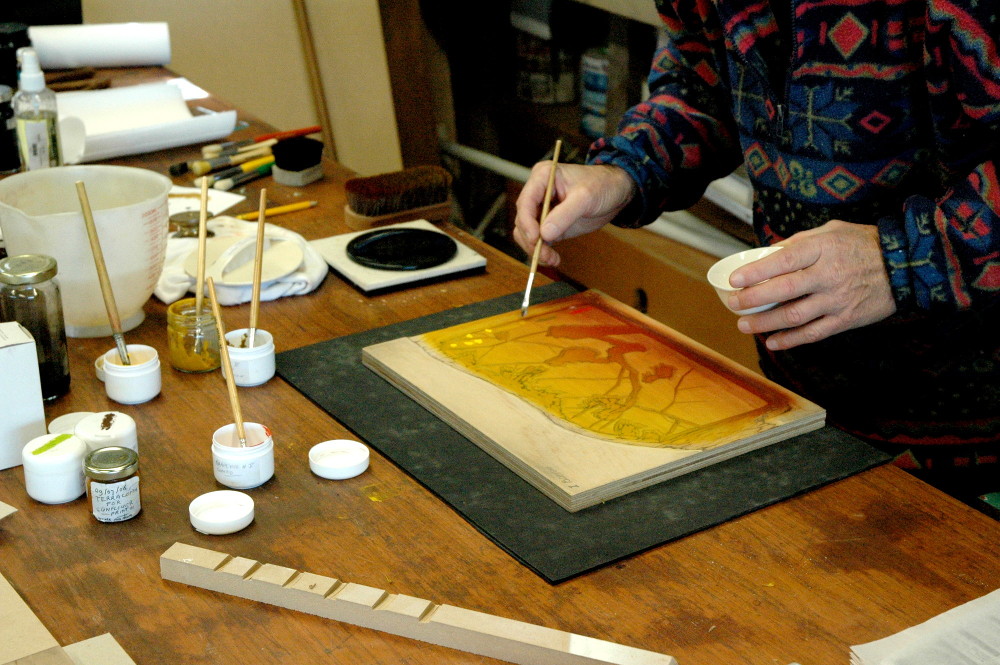
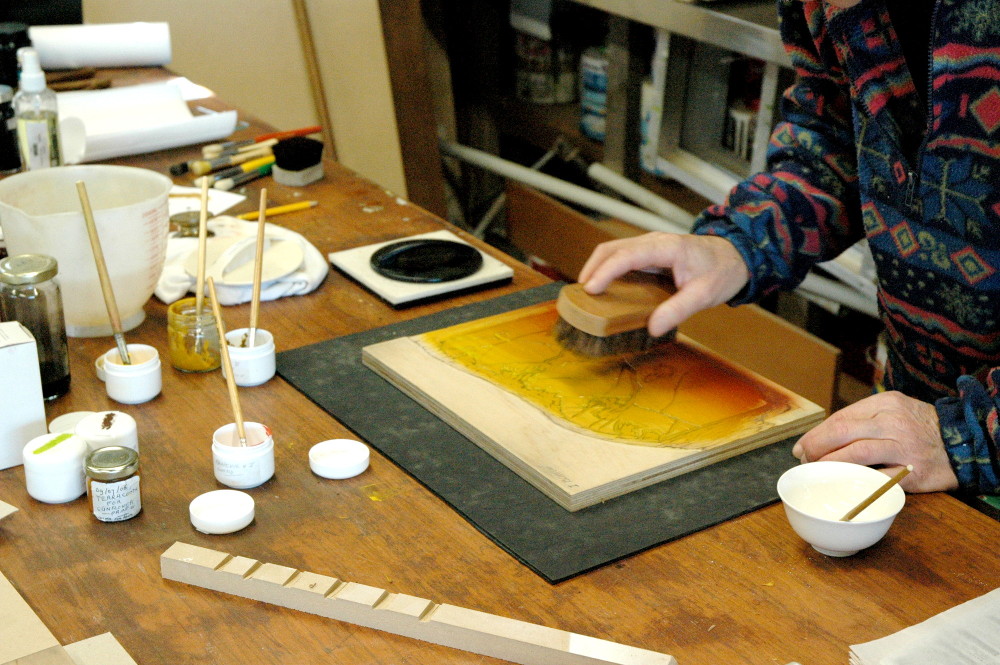
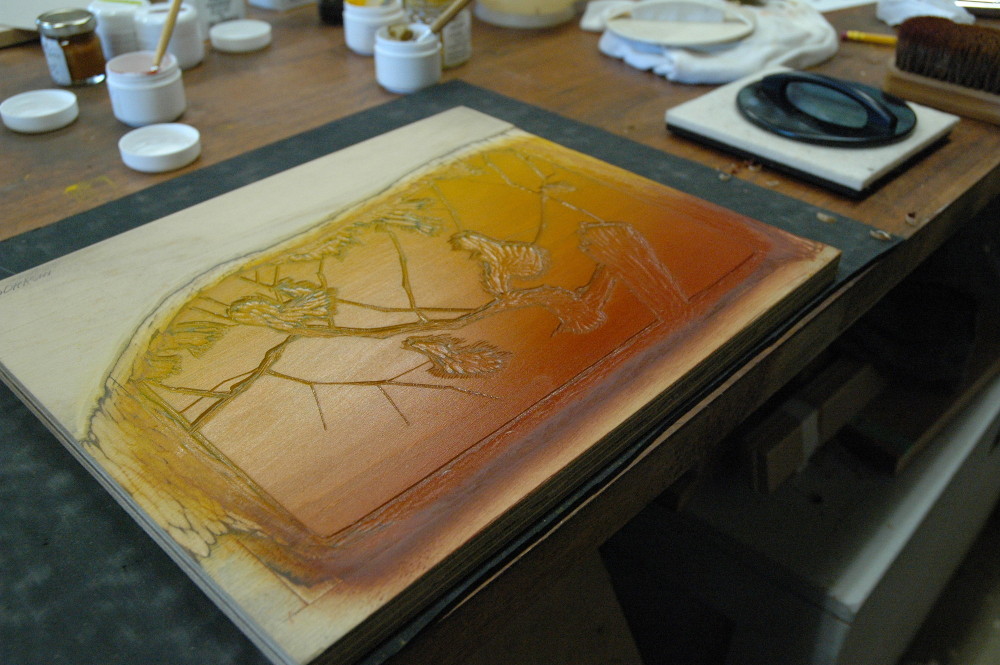
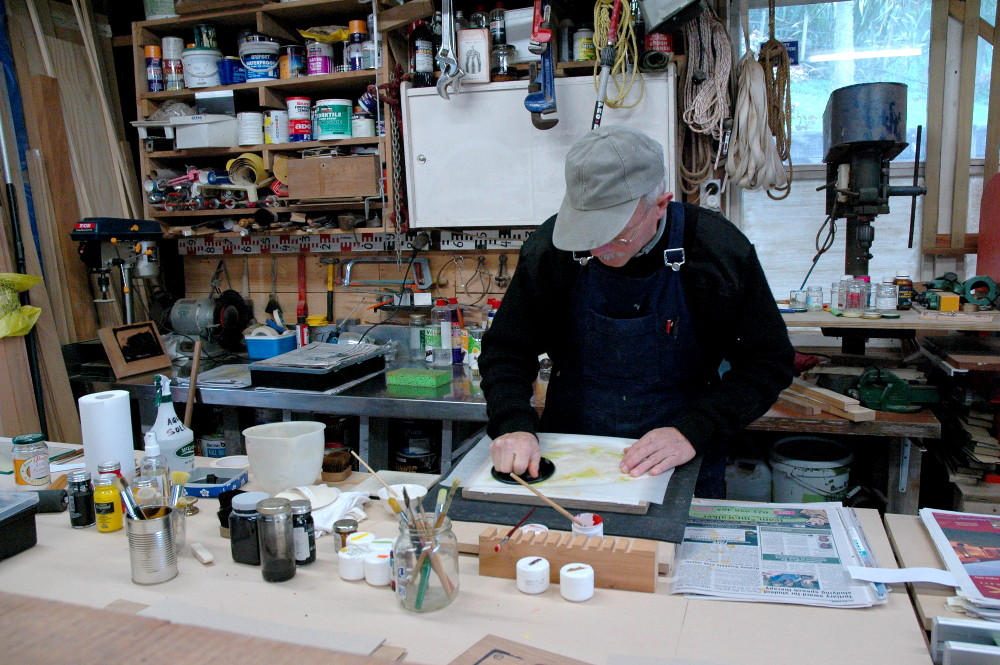
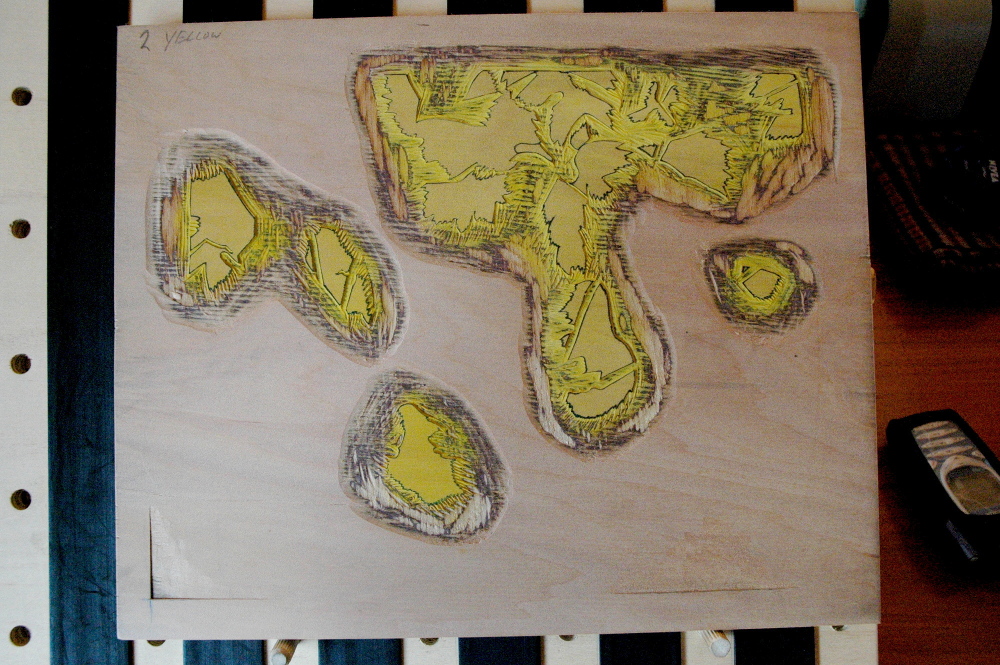

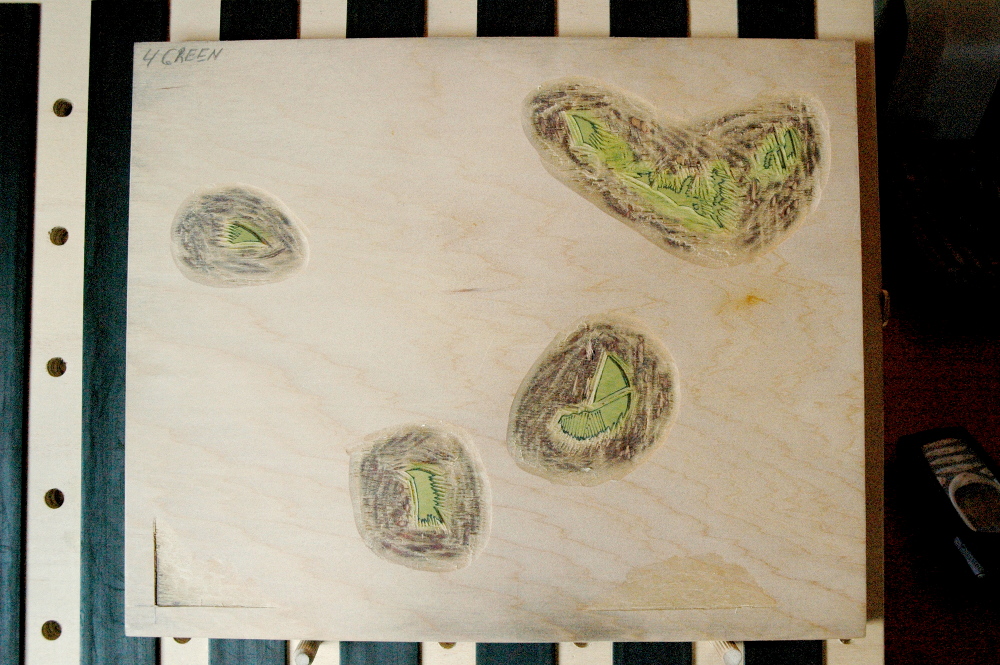

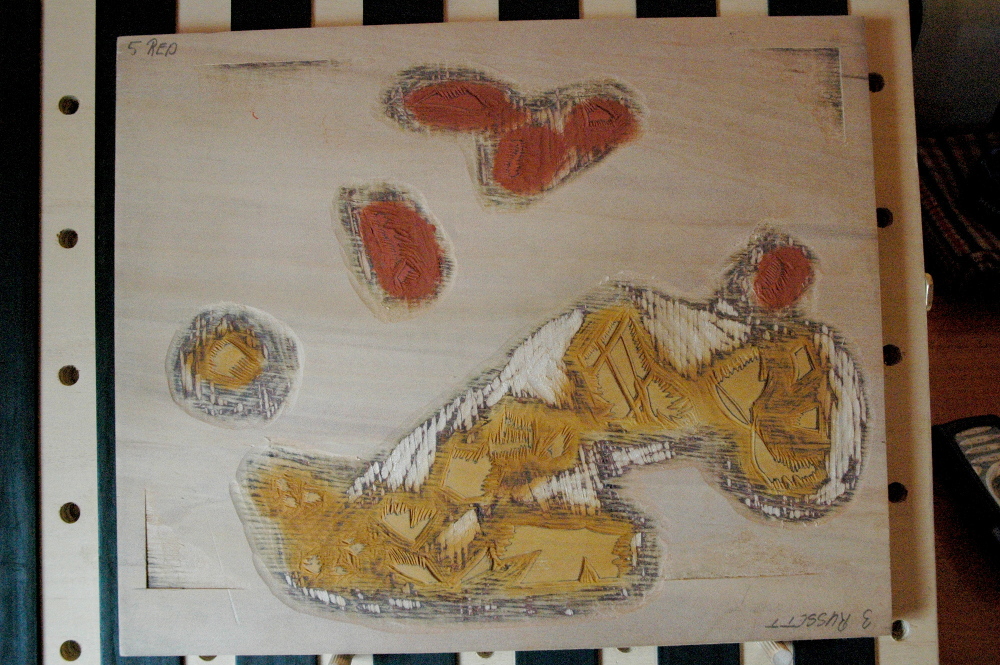
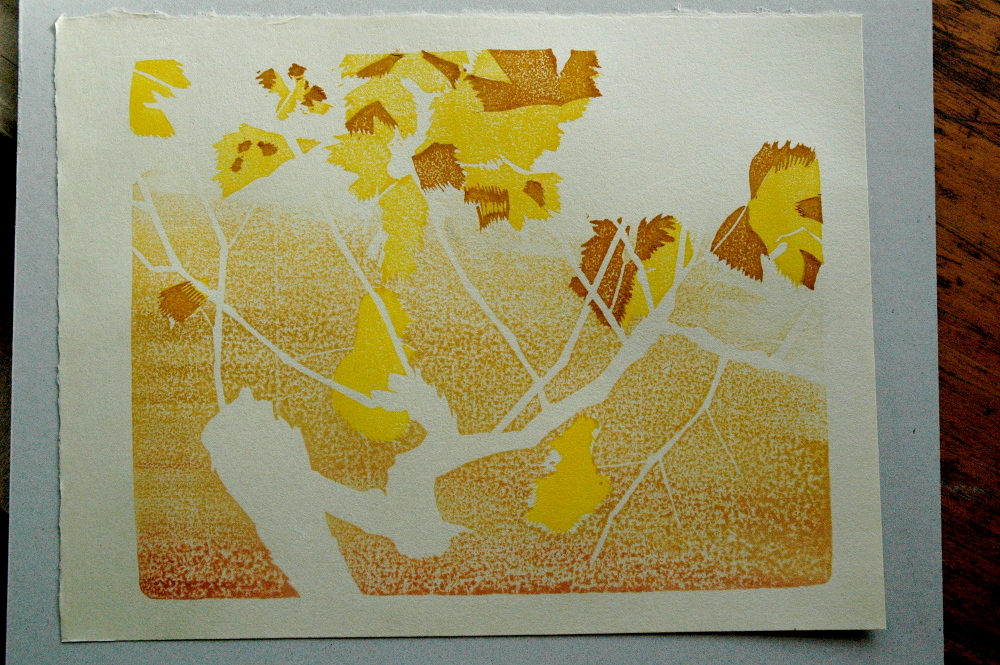
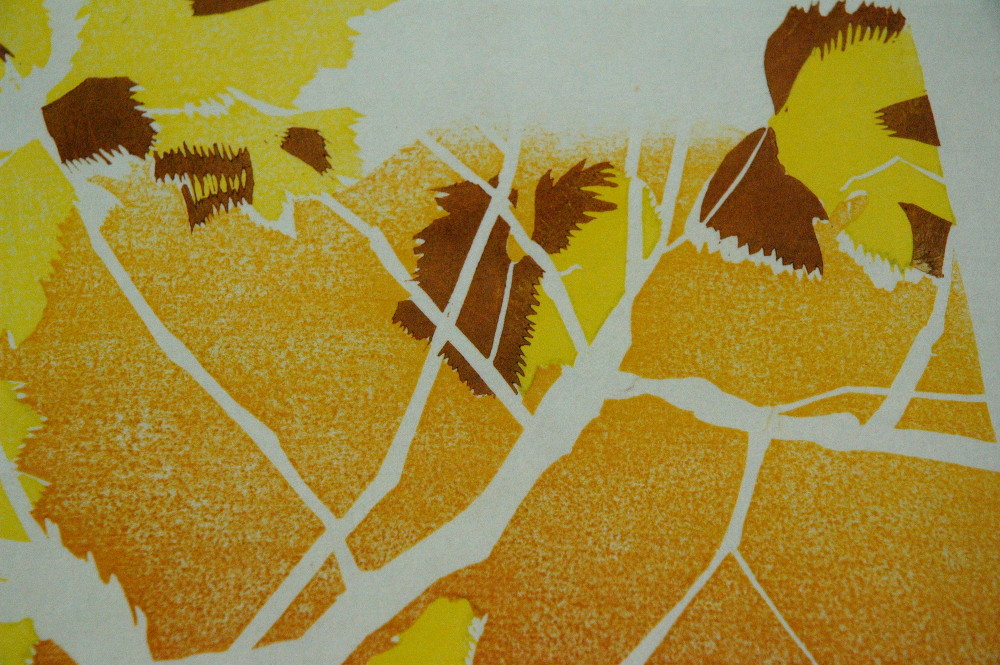
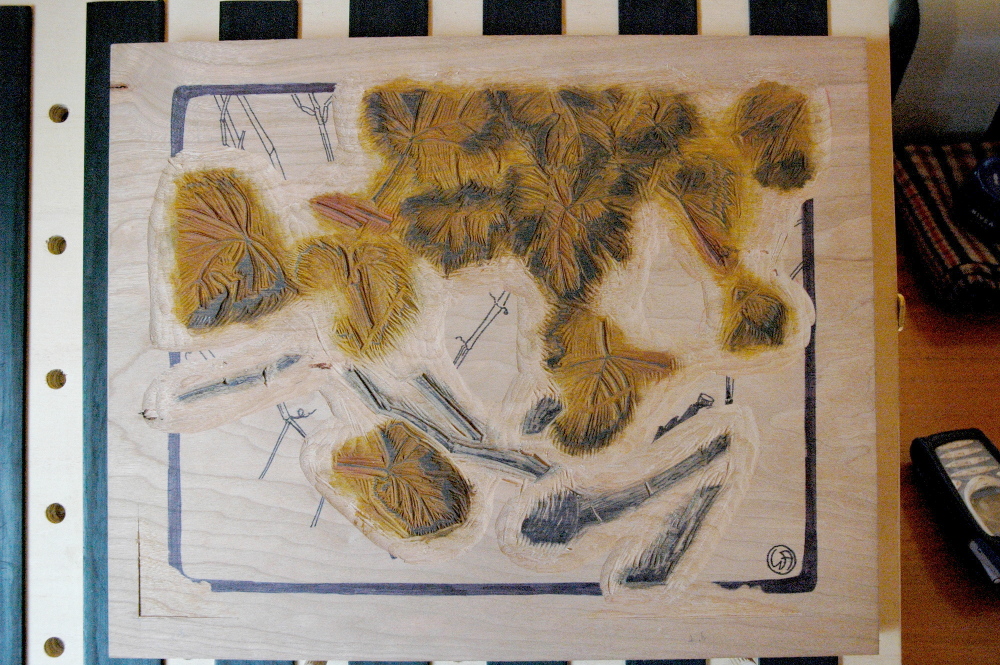
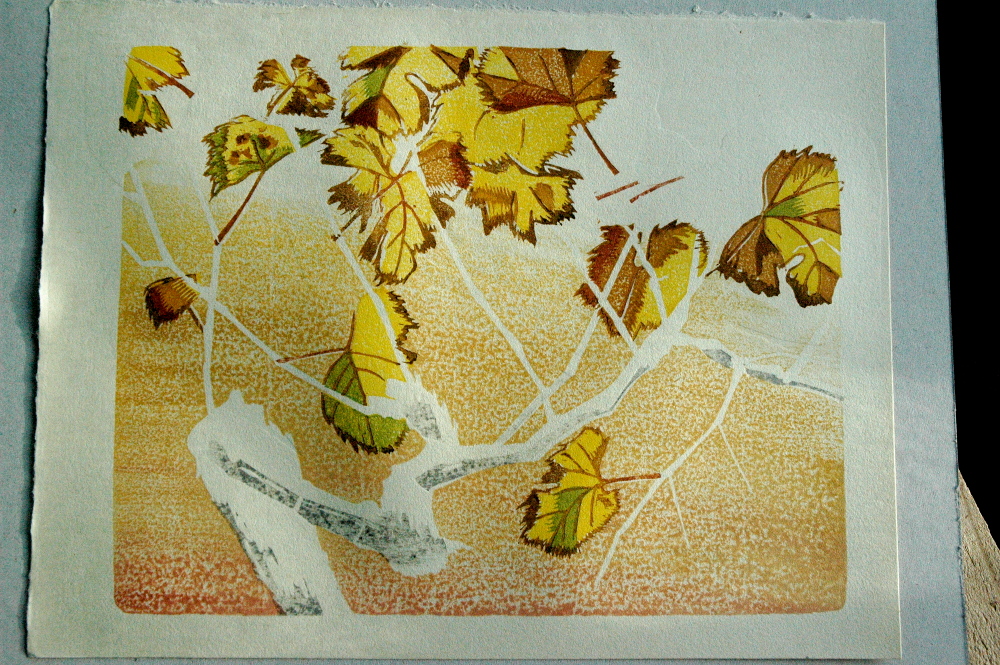

Woodcuts
wouter@acwwoodcuts.com
42 Rue Grand'Rue
11240 Belvèze du Razès
France +33 (0)4 30 07 30 80